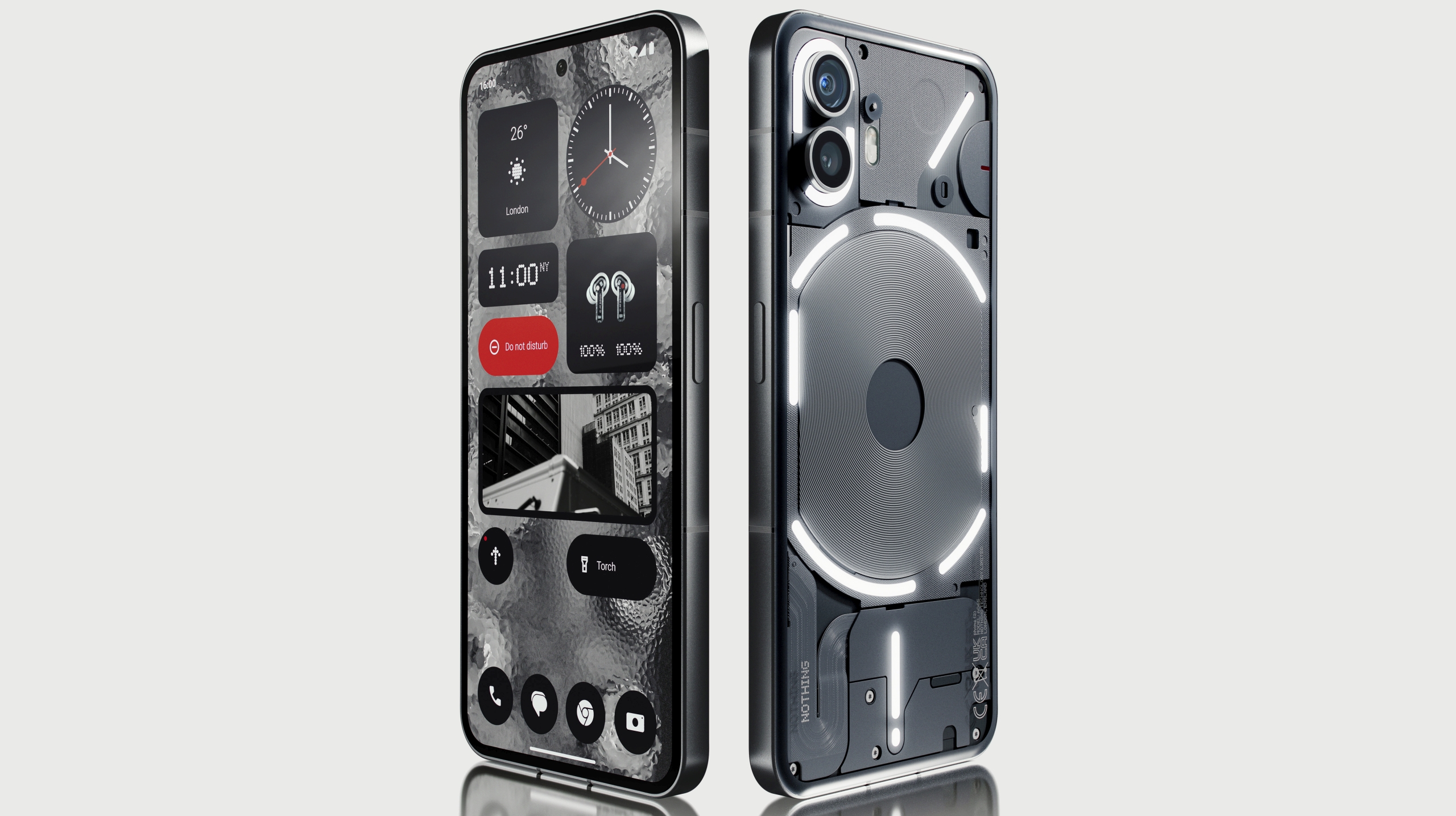
The Nothing Phone 2 is officially here, and we've had a chance to spend quality time with the new phone. You can read our full impressions in our Nothing Phone 2 review, or stay here if you just need to know the facts.
This successor to the Nothing Phone 1 builds on everything good about that handset, while aiming itself at a slightly higher segment of the market – but still undercutting the likes of the Samsung Galaxy S23, the iPhone 14. The Nothing Phone 2 is priced in the middle where Samsung and Apple dare not tread, though it still faces stiff competition.
Below you’ll find full details of the Nothing Phone 2, including its release date, its price, its specs, and explanations of its key features – like its expanded Glyph Interface.
Cut to the chase
- What is it? Nothing's sequel to its design stand-out smartphone
- When is it out? Available to pre-order now, ships on July 17
- How much does it cost? Starts at $599 / £579 / AU$1,049
Nothing Phone 2: release date and price
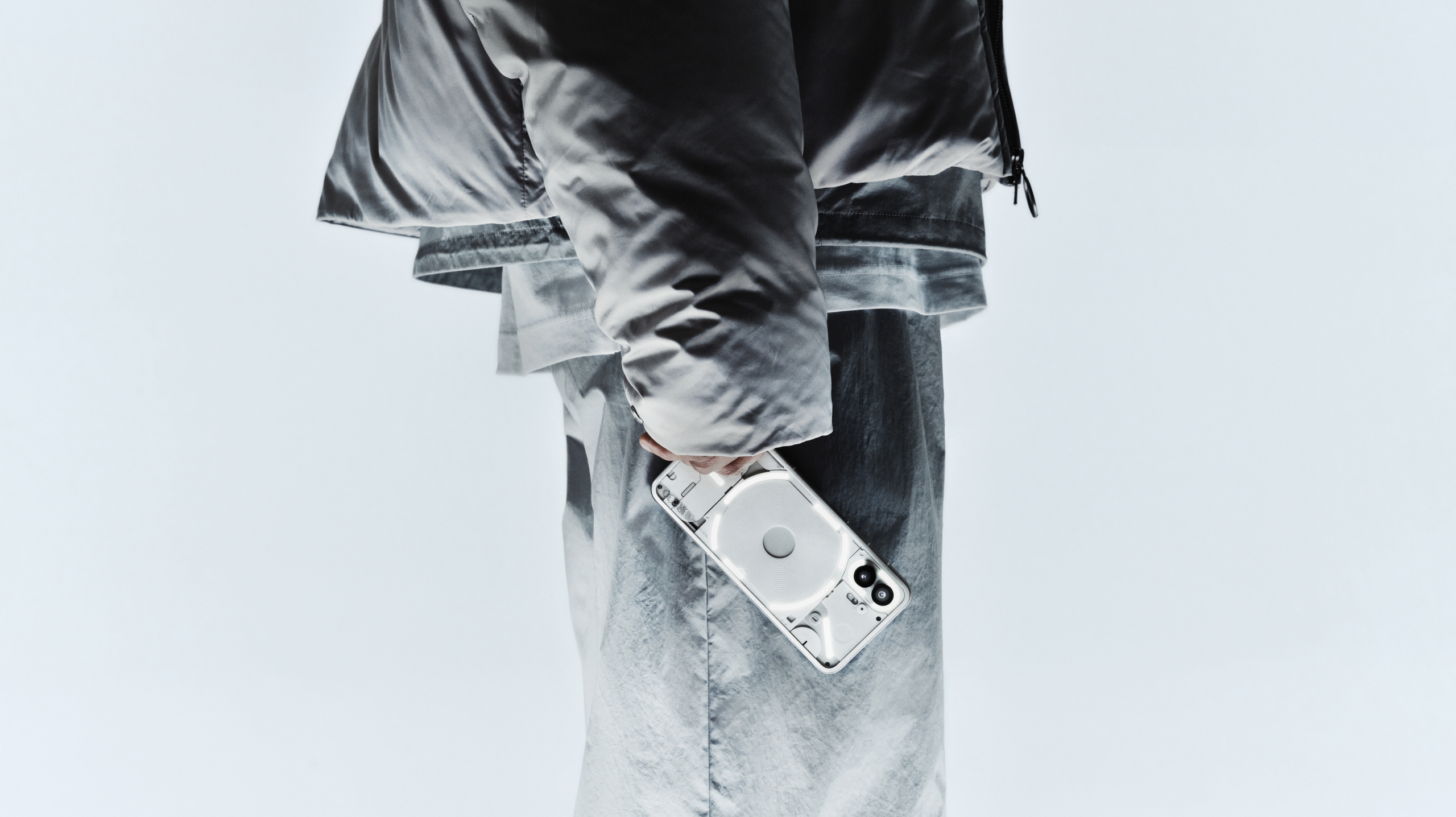
The Nothing Phone 2 was announced on July 11 you can buy the phone directly from Nothing’s site.
On July 13, Nothing hosted launch events in New York, Dublin and London, among other spots. You could buy the phone there and even meet Nothing CEO Carl Pei, if you chose the right city.
Most people will be able to get the phone starting on July 17, as that’s when orders from Nothing’s website will first ship and open sales will begin.
The Nothing Phone 2 starts at $599 / £579 / AU$1,049 for a model with 8GB of RAM and 128GB of storage, rising to $699 / £629 / AU$1,149 for one with 12GB of RAM and 256GB of storage, and topping out at $799 / £699 / AU$1,249 for a version with 12GB of RAM and 512GB of storage.
Nothing Phone 2: specs
Before we look at the various aspects of the Nothing Phone 2 in detail, here’s just a quick rundown of its key specs so you can see what it offers at a glance.
Nothing Phone 2: design
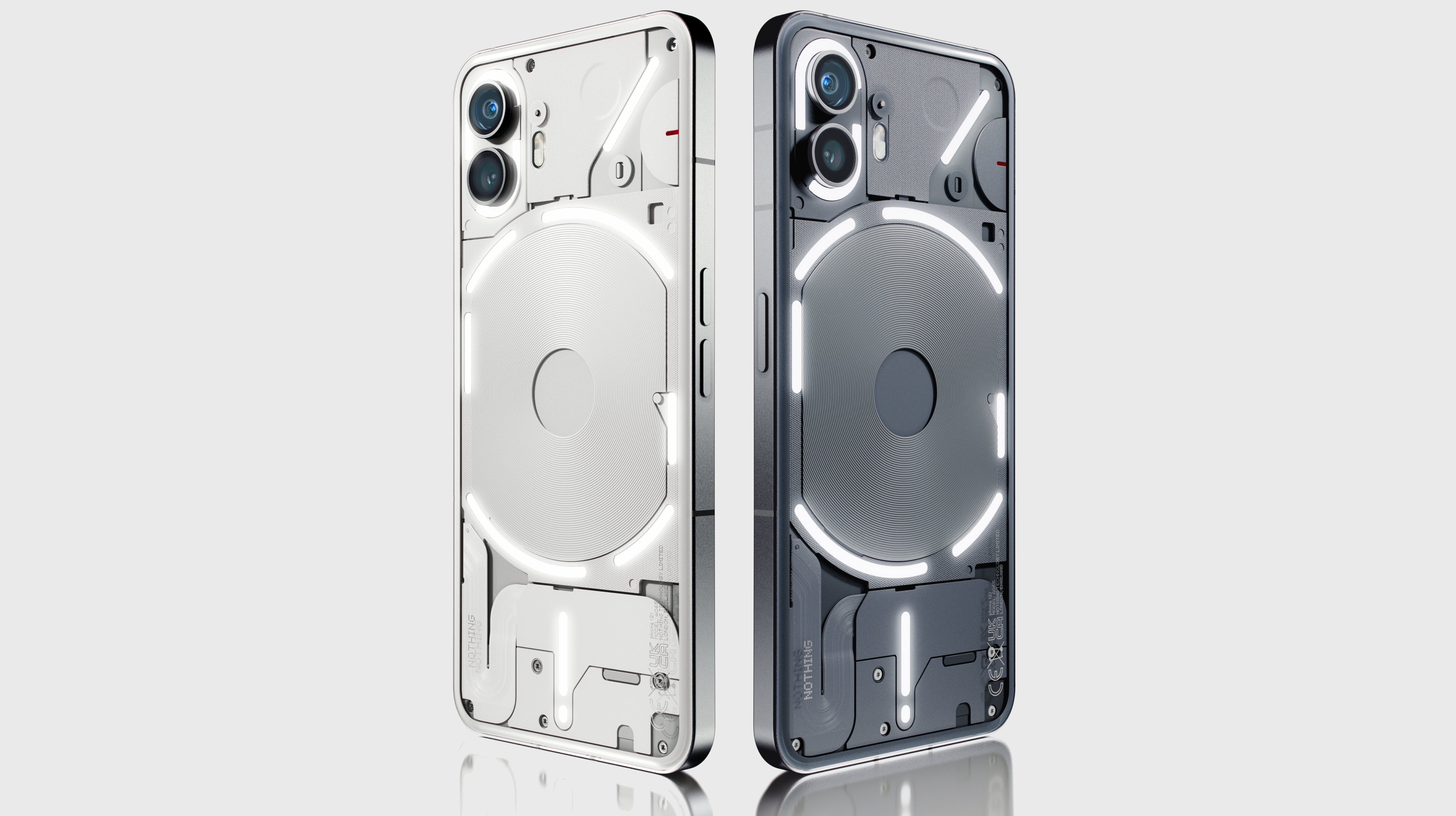
The Nothing Phone 2 looks a lot like the Nothing Phone 1, with a bunch of light strips on the back, and a flat screen with a punch-hole camera on the front – though here the camera is in the top center, while on the previous model it’s at the left edge of the screen, and the bezels are slightly slimmer on the new phone.
The Nothing Phone 2 is 162.1 x 76.4 x 8.6mm and 201.2g, it has an IP54 rating – meaning it’s protected from water splashes and partially protected from dust, and it’s available in white and dark gray shades.
The back is clad in glass and slightly curved, while the frame is made from 100% recycled aluminum.
Nothing Phone 2: display
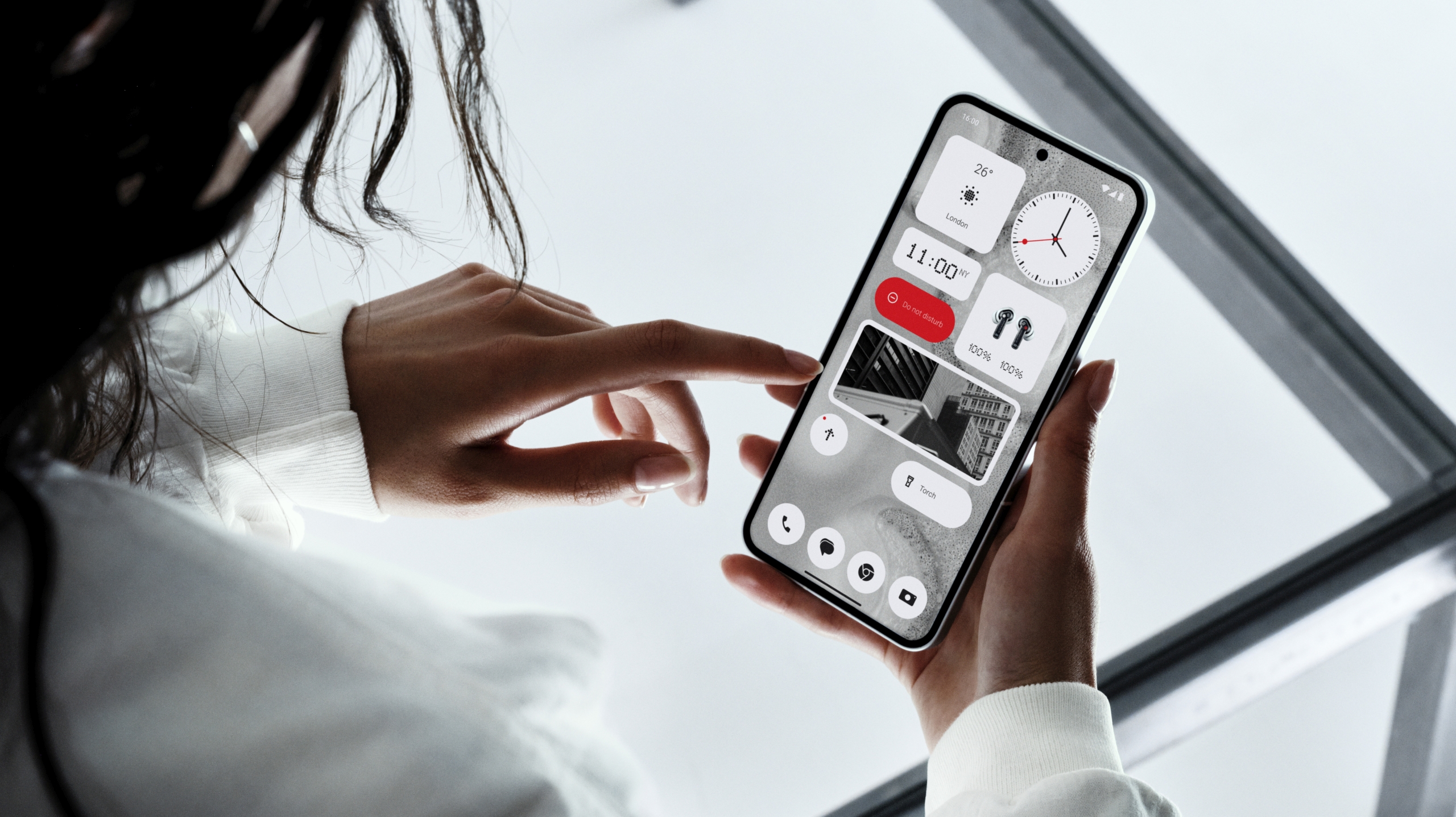
You get a 6.7-inch 1080 x 2412 OLED display on the Nothing Phone 2, with 394 pixels per inch, an adaptive refresh rate that can move between 1Hz and 120Hz, and a peak brightness of 1,600 nits.
The Nothing Phone 2’s screen also has a contrast ratio of 1,000,000:1, 10-bit color depth, and support for HDR10+. It’s also protected by Gorilla Glass, though at the time of writing Nothing hasn’t said which version.
This is a bigger, brighter screen than the Nothing Phone 1’s, and it's actually brighter than any phone in this price range. It can't quite match an expensive flagship like a Samsung Galaxy S23 Plus, but it can drop to a low refresh rate, thereby preserving battery better.
Nothing Phone 2: camera
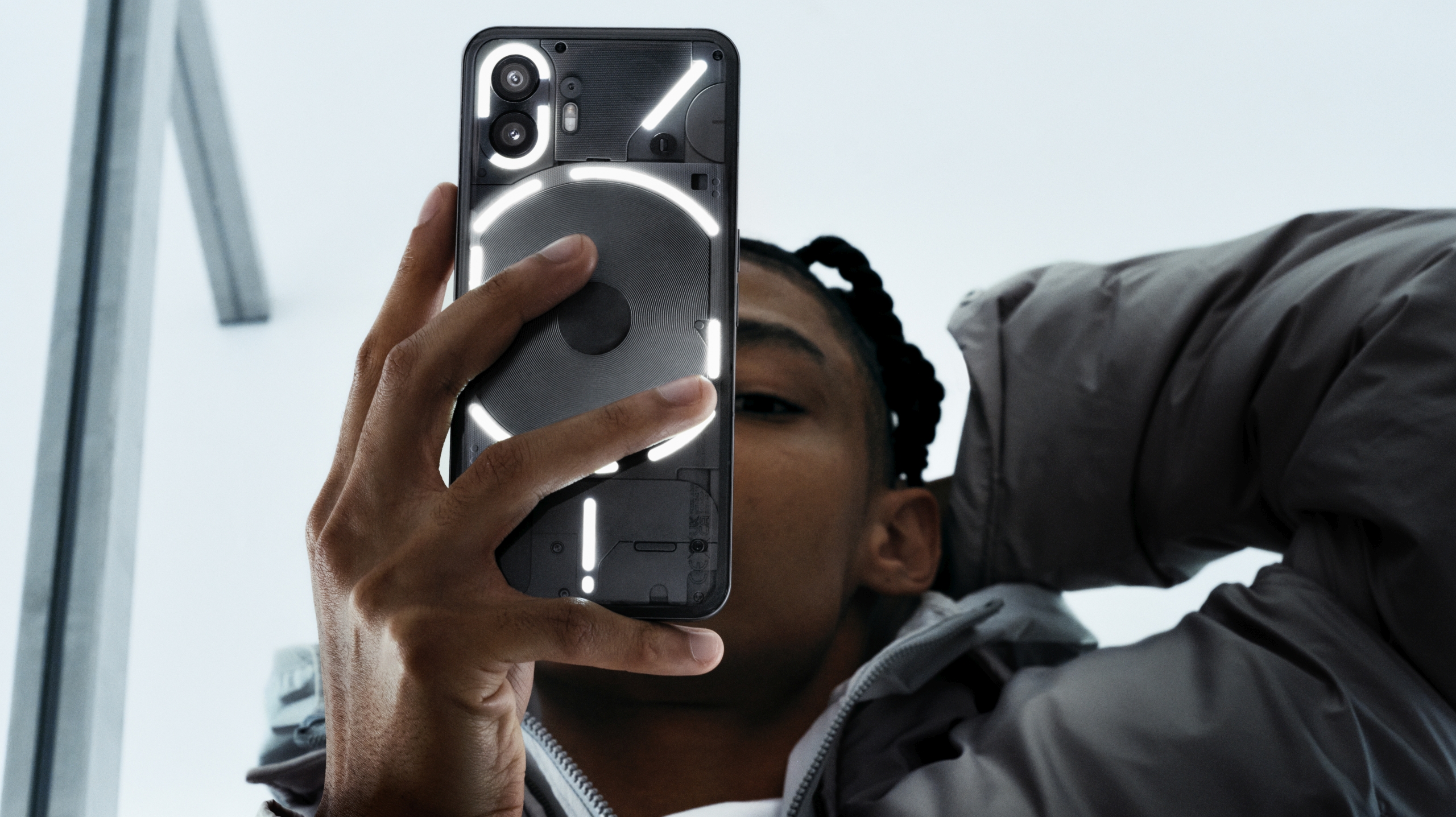
As with the Nothing Phone 1, there’s a dual-lens camera here. The main sensor is a 50MP f/1.88 Sony IMX890 (which you’ll also find on the likes of the OnePlus 11), complete with optical image stabilization (OIS) to keep shots steady. That’s an upgrade on the Nothing Phone 1’s main camera.
The other sensor is a 50MP f/2.2 Samsung JN1, and this is used for ultra-wide shots (with a 114-degree field of view), as well as for macro shots.
Compared to the Nothing Phone 1, the company claims to have upgraded the cameras with “smart tuning effects”, such as Motion Capture 2.0, which uses AI to track moving subjects and ensure they stay in focus.
There are all sorts of other camera modes and features too, like 2X Super-Res Zoom, for telephoto shots, along with common modes like panorama, night mode, expert mode, and more.
There’s also a 32MP f/2.45 camera on the front – up from a 16MP selfie camera on the Nothing Phone 1, and you can record video in up to 4K quality at 60fps with the main camera, or in 1080p at 60fps using the front camera.
Nothing Phone 2: battery
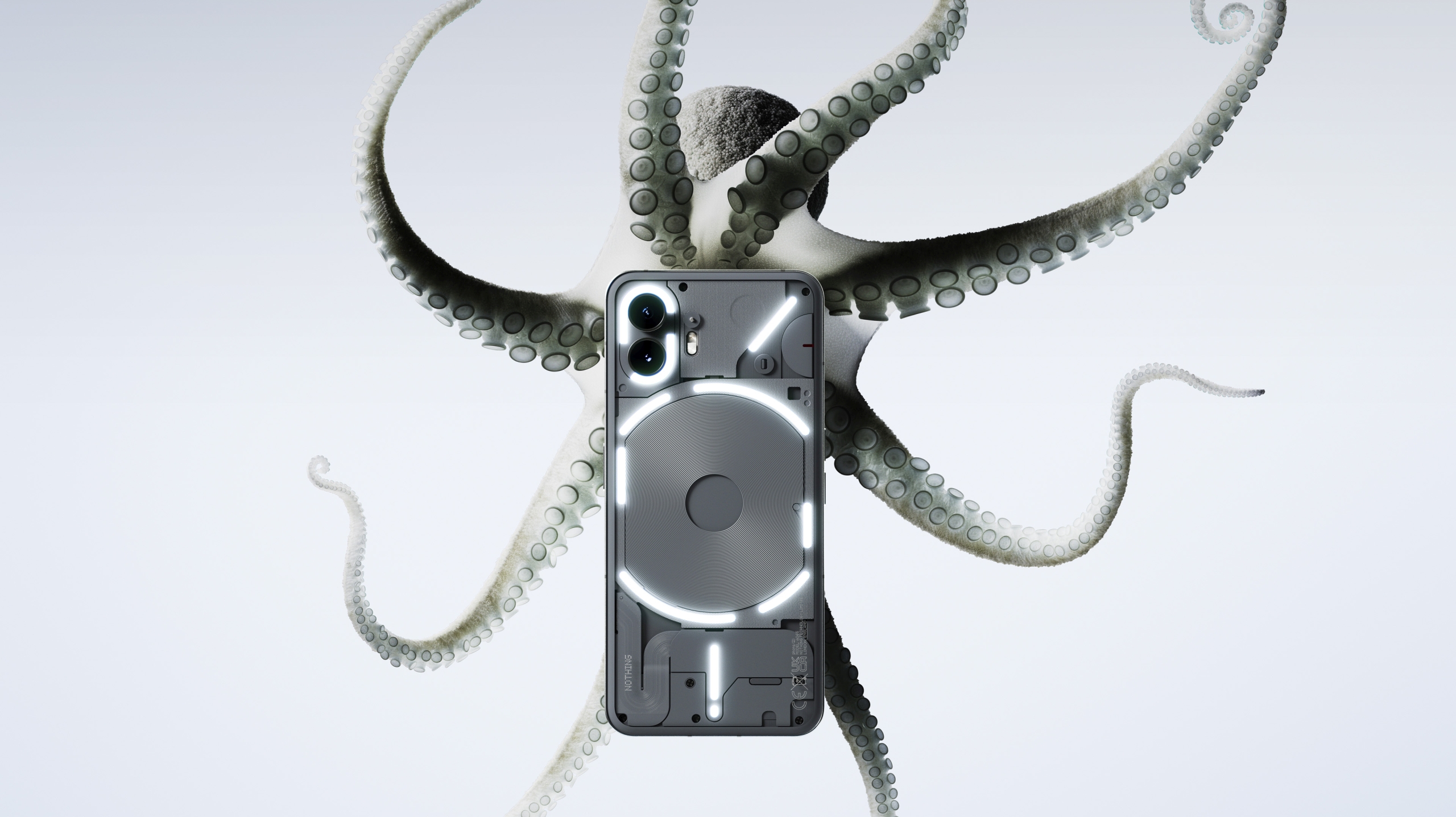
There’s a 4,700mAh battery inside the Nothing Phone 2, with 45W wired charging. Nothing claims you can fully charge it like this in 55 minutes, or you can use wireless charging at 15W for a full charge in 130 minutes.
That’s a slight upgrade in capacity and wired charging speed from the Nothing Phone 1, and like that phone there’s also 5W reverse wireless charging, so you can use the Nothing Phone 2 as a wireless charging mat for other devices.
Nothing Phone 2: power and features
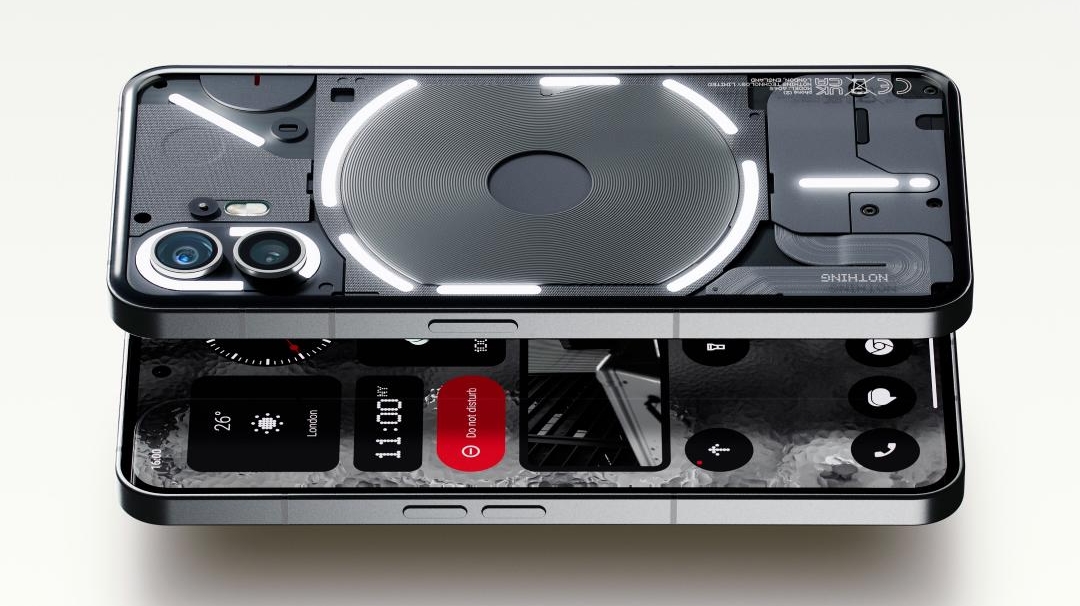
The chipset at the heart of the Nothing Phone 2 is a Snapdragon 8 Plus Gen 1, which you’ll also find in the likes of the Samsung Galaxy Z Flip 4. It was the best chipset available to Android phones in late 2022, but it’s now been superseded by the Snapdragon 8 Gen 2.
Of course, the Nothing Phone 2 has a mid-range price, so it’s understandable that it doesn’t have the very best chipset, and it does apparently boast an 80% improvement in overall performance compared to the Nothing Phone 1.
The Phone 2 also has a choice of 8GB or 12GB of RAM, and comes with up to 512GB of storage. It supports 5G of course, and has an in-display fingerprint sensor, facial recognition, and dual stereo speakers.
The phone runs Nothing OS 2.0, which is the company’s customized take on Android, complete with lock screen widgets, and it’s promised three years of Android updates and four years of security patches – with the latter rolling out every two months.
Of course, the Nothing Phone 2 also has those lights on the back, and they do more than just look pretty.
This is known as the 'Glyph Interface', and it’s a returning feature from the Nothing Phone 1, where the lights could be lit in a variety of patterns to display specific notifications, show your battery and charging levels, or act as a fill light for the camera.
This time around though, the number of light strips has gone up from five on the Phone 1 to 11 on the Phone 2, and the number of individual LED lighting zones has risen from 12 to 33. This means the lights can be used for far more things, including as a progress bar, a visual indicator of your phone's volume, and as a timer, among other things.
Uber and Zomato have also signed up to make use of these LEDs with their apps, and other companies may well follow. Plus, you can use a Glyph Composer to craft custom ringtones using different sounds and lighting patterns, and assign different ones to individual contacts.







